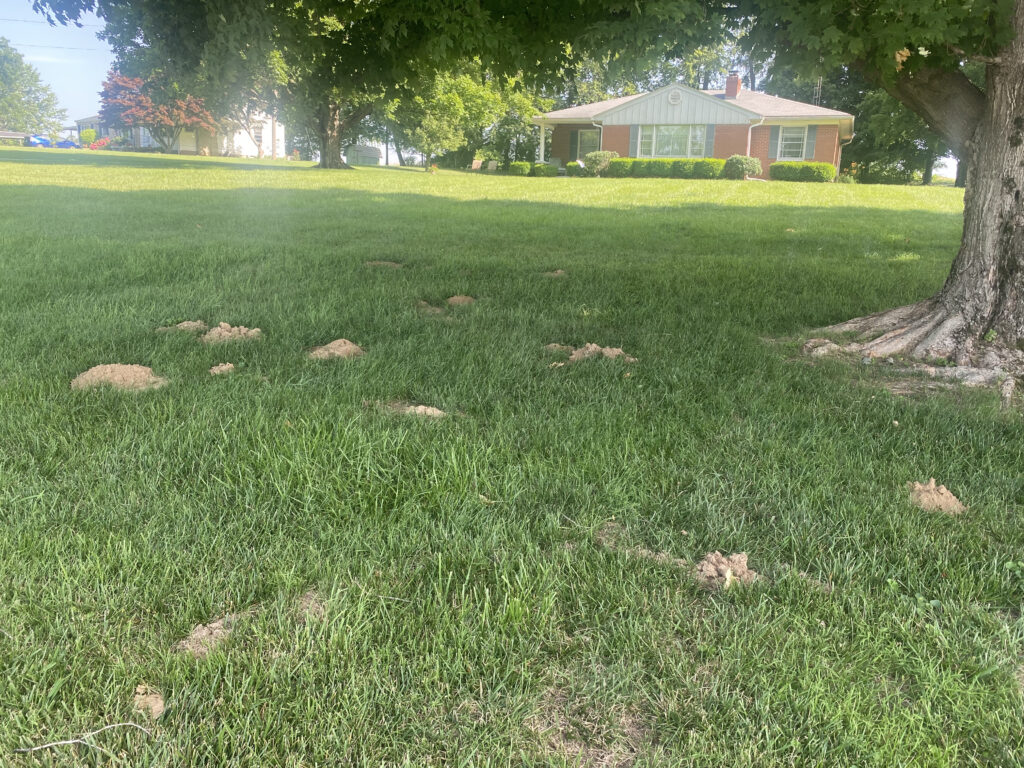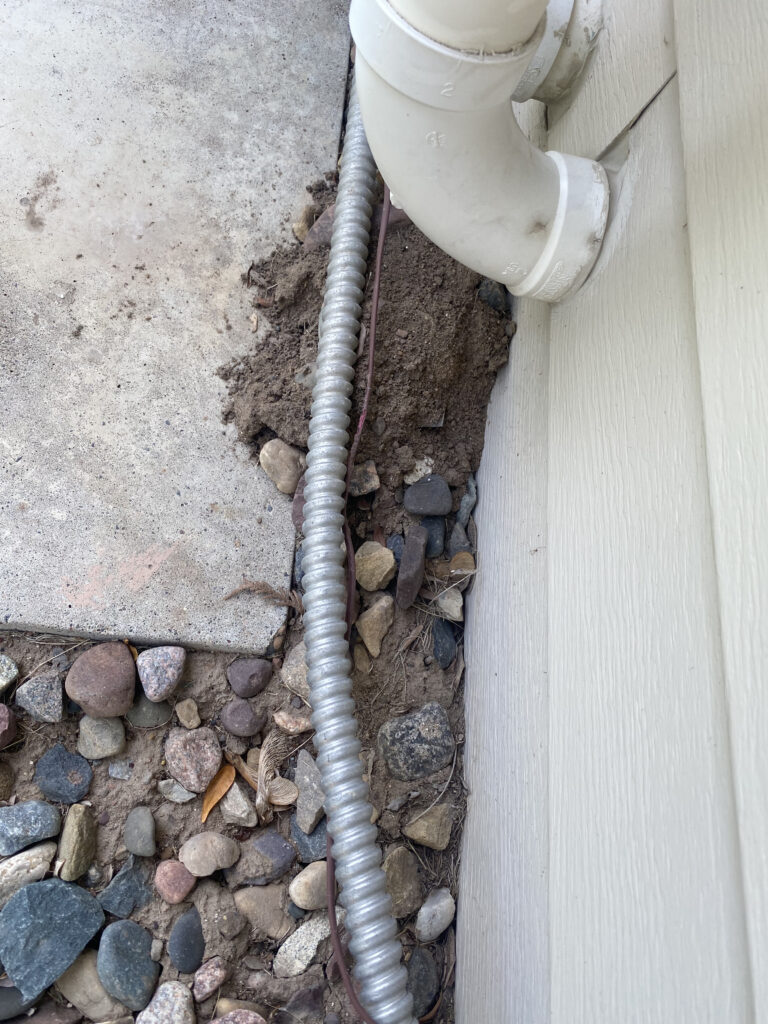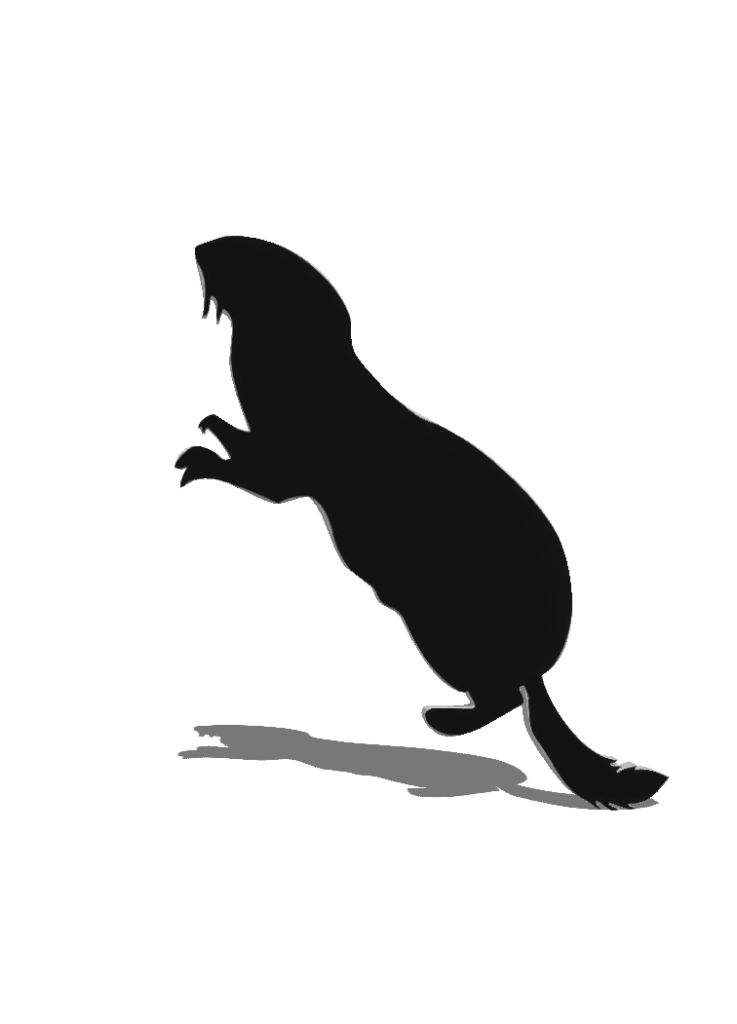If you watch movies involving spies, you are aware of the metaphor of the mole being a security threat. The visual is simple and makes a lot of sense, but it seems that the pocket gopher would have been the better metaphor. What you don’t see may be a security threat.

Underground with the Pocket Gopher
Mole tunnels are most often right below the surface where earthworm and insect hunting is prime. Pocket gophers on the other hand, are herbivores that want to feed on roots of plants (or just pull the whole plant into their tunnel). Depending on the type of soil and vegetation in an area pocket gophers will have a main tunnel somewhere between 4 and 18 inches deep with ancillary tunnels coming off of it. It can be much harder to know the direction and location of a pocket gopher tunnel than it is with moles.

Volcano Shaped Mounds
As pocket gophers build their tunnel systems, they end up with large amounts of dirt that are in their way. They keep their path clear by hauling the dirt up to the surface and pushing it out of an exit hole. The dirt piles up in a lopsided volcano shaped mound. Once the pocket gopher has emptied their tunnel of the unwanted dirt, they pack the hole closed to keep out sunlight, water, and predators. This is known as the plug. These mounds are the best indicator of a pocket gopher’s presence, but rain and erosion work to hide their presence
Security Threats

Pocket gophers are mostly a threat to the plants they wish to eat which may be your favorites. Beyond landscaping disturbance is the question of what a pocket gopher will do when it reaches obstacles blocking their path such as:
- underground lines
- wiring
- storage
The pocket gopher’s oversized front teeth are great for biting through certain obstacles. As with anything out of sight, it is hard to know when damage is occurring. It may be direct damage from a pocket gopher. Alternatively, damage could stem from unusual weathering and corrosion occurring under the surface from pocket gopher tunnels and activity intersecting with it. This was precisely the concern of the government inspection team tasked with overseeing a large anhydrous ammonia plant who called in Rove Pest Control to protect their silos. This protection allowed business to march on while protecting the environment from a breach.
Tighten up your Security
When security is threatened, tighten up the security around your home and business. Instead of worrying about letting a mole into your security program, deploy Rove’s underground security watch force. They’ll secure the underground and you can focus on the things visible on your plate.
Solving the Autostereogram
It’s easier for some to be able to view the image hidden in autostereograms than it is for others. For a quick guide on a few different techniques to getting them to come into focus, visit this helpful guide here. Otherwise, scroll through the original image and then the hidden image.


About Rob Greer: Pest Control Expert and Industry Leader
Rob Greer, co-founder of Rove Pest Control, has a deep connection with nature, developed during his upbringing in rural Idaho where he raised horses and cattle. He began his career in pest control in 2001 to support his university studies. After earning a BS in Business Management, Rob, along with Lenny Gray and McKay Bodily, founded Rove Pest Control.
Rob has played a pivotal role in shaping the operational framework of Rove Pest Control, with a focus on personal development for team members, public health awareness, and tailoring services to meet the needs of individuals and communities.
As an Associate Certified Entomologist (ACE) and Subject Matter Expert (SME), Rob has made significant contributions to the pest control industry. He has collaborated on the Minnesota Department of Agriculture’s UMN Extension certification manual and exam development, the National Pesticide Applicator Certification Core Manual for the EPA, and the Quality Pro Customer Service Credential Task Force. His expertise has also been recognized in his testimony for the pest control industry before the Minnesota state legislature as a State Policy Affairs Representative. Currently, Rob serves as the President of the Minnesota Pest Management Association Board. Learn more about Rob Greer.